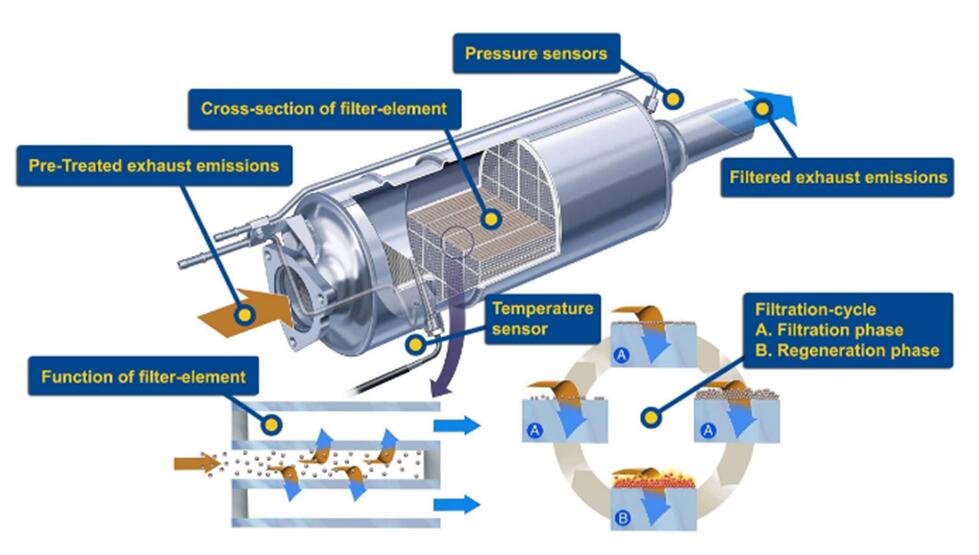Advancements in DPF Materials and Coatings: Enhancing Efficiency and Durability

DPF process
Advancements in DPF (Diesel Particulate Filter) Materials and Coatings have played a crucial role in enhancing the efficiency and durability of DPFs in exhaust gas after-treatment systems. DPFs are designed to capture and remove harmful particulate matter (PM) emissions from diesel engines. The choice of materials and coatings used in DPF construction significantly impacts their performance, longevity, and overall effectiveness in reducing emissions.
The substrate material used in DPFs serves as the structural support for the filter and determines its filtration efficiency, pressure drop, and thermal stability. Advancements in DPF substrate materials have led to improved performance in the following ways:
- High Porosity: Materials with high porosity, such as cordierite, silicon carbide (SiC), and aluminum titanate, are commonly used in DPF substrates. These materials provide a large surface area for particle filtration and enable efficient exhaust gas flow.
- Thermal Durability: Advanced substrate materials exhibit high thermal stability, allowing them to withstand the extreme temperatures generated during DPF regeneration processes.
- Low Pressure Drop: Innovations in substrate materials have led to reduced pressure drop across the DPF, minimizing the impact on engine performance and fuel consumption.
Coatings applied on the DPF substrate play a critical role in enhancing filtration efficiency, reducing soot accumulation, and improving regeneration performance. Some advancements in DPF coatings include:
- Catalyst Coatings: Catalyst coatings, such as platinum, palladium, and rhodium, are applied to the DPF substrate to enhance the oxidation of soot particles during regeneration. These catalyst coatings promote the conversion of carbon monoxide (CO) and unburned hydrocarbons into carbon dioxide (CO2) and water vapor (H2O).
- Hydrophobic Coatings: Hydrophobic coatings prevent the accumulation of water and moisture on the DPF surface, reducing the risk of corrosion and improving overall durability.
- Self-Cleaning Coatings: Self-cleaning coatings enhance the DPF’s ability to regenerate by reducing the adhesion of soot particles to the substrate. This allows for more efficient regeneration and improved long-term performance.
Durability and Performance Enhancements:
- Advancements in DPF materials and coatings have led to significant improvements in durability and performance, including:
- Extended Service Life: The use of advanced materials and coatings helps enhance the durability and longevity of DPFs, reducing the need for frequent replacements.
- Enhanced Regeneration Efficiency: Catalyst coatings and self-cleaning properties improve the efficiency of DPF regeneration, ensuring effective removal of accumulated soot particles and minimizing exhaust backpressure.
- Improved Filtration Efficiency: Advanced materials and coatings enable higher filtration efficiency, capturing a greater percentage of particulate matter, including ultrafine particles.
- Compatibility with Alternative Fuels: Advancements in DPF materials and coatings have made them more compatible with alternative fuels, such as biodiesel and renewable diesel, ensuring effective emissions control across different fuel types.
In summary, advancements in DPF materials and coatings have led to significant improvements in efficiency and durability. These advancements have resulted in higher filtration efficiency, improved regeneration performance, extended service life, and compatibility with alternative fuels. These developments contribute to more effective emissions control and enhanced environmental protection in exhaust gas after-treatment systems.
